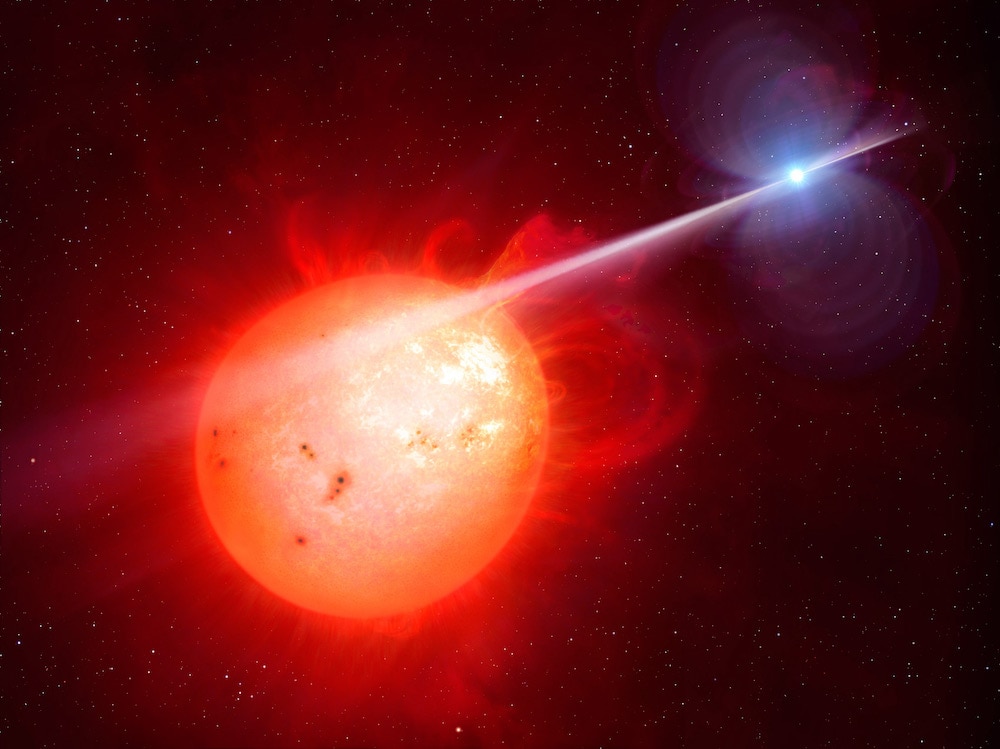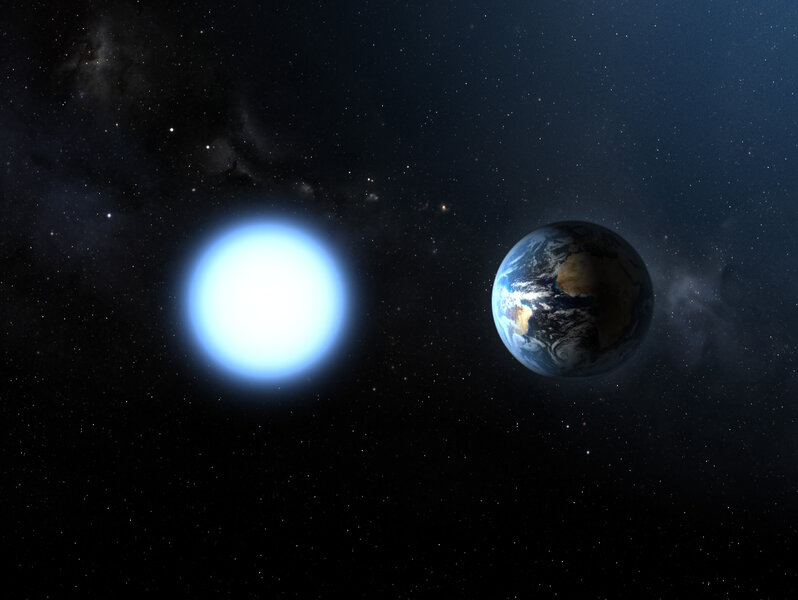Create a free profile to get unlimited access to exclusive videos, sweepstakes, and more!
Astronomers find progenitor systems of extremely rare stars predicted but never before seen
Extremely low mass white dwarf factories found.

One of my favorite kinds of scientific problems is when you see something that is clearly impossible given what you know about it.
For example, white dwarfs are the cores of stars left over after they die. The star swells up, blows off its outer layers, and after some time all that's left is the hot, dense core exposed to space. Most stars, including the Sun, will eventually die and leave behind a white dwarf.
The mass of that white dwarf depends a lot on how massive the star was initially. The more massive the star, the more massive the white dwarf. But this leads to a paradox! The lowest mass white dwarfs we see are less than 0.3 times the Sun's mass; we call these Extremely Low Mass white dwarfs, or ELMs. So the stars that form them have to be extremely low mass... but stars like this live for tens or hundreds of billions of years.
See the problem? The Universe has only been around about 14 billion years. It isn't old enough to have made any ELMs!
Yet we see them. How is this possible?
When problems like this arise in science, it's a safe bet that the Universe knows what it's doing. So what's really going on is simple: You missed something.
In this case it's other stars. Specifically, binary stars. Maybe the low mass star that made the ELM was in a close orbit around another star. These systems behave differently, change differently over time, than single stars do. For example, if the low mass star is a companion to a previously made more massive white dwarf (called the primary), and the orbit is close enough, the primary can pull material off the companion star, stripping its outer layers away. If the timing is just right, this can leave behind a much lower mass white dwarf that would take far longer than the age of the Universe to make if the star were solo.
OK, cool. Nice hypothesis you got there. But is there any observational evidence for it?
Up until recently the answer was no. But a clever use of archived and new observations has revealed the progenitors of ELMs, and they pretty much fit what astronomers expected.
The first important piece of the puzzle is that all known ELMs are in binary systems where the other component, the primary, is also a white dwarf. That means to make them you need to start with a low mass star in a close orbit around a white dwarf, and those can be found by looking through sky surveys.
The second key piece is that the low mass star companion has to be near the end of its life, so it's just started making a white dwarf core. That way, when the outer layers are stripped off by the primary the resulting white dwarf is much lower mass than usual. That's a bit tougher to find, but there's a trick: These stars losing their outer layers to the primary will be hotter and smaller than usual, making it possible to distinguish them from other stars orbiting white dwarfs.
I'll note I'm skipping a lot of steps here; the actual chain of logic is long and complex, dealing with things like how stars evolve, the details of how the brightness of binary systems — one of the few reliable things we can directly measure from them — changes over short and long time ranges, and much more. But, in the end, the point is the progenitor systems of ELMs can, in practical terms, be found.
The astronomers first searched through Gaia data for binary systems. Gaia is a European Space Agency satellite that measures the brightness, positions, and motions of well over a billion stars in the sky, and does so with phenomenal precision. Before Gaia, a search like this would've been impossible.
They first cut any stars too far or faint, because the numbers wouldn't be reliable. That left them with 660,000 stars (!!). They then looked for stars that were fainter than normal stars (ones like the Sun) but brighter than the usual white dwarfs. That reduced the number to 8,300. They then looked for ones that had good observations of their brightness over time using the Zwicky Transient Facility — another survey done by a ground-based telescope — reducing the number to 3,600. Then they made their final cut by looking at the remaining binaries whose brightness changed in a specific way, indicating there was a low mass star in close orbit around a white dwarf primary.
That left them with 51 candidate proto-ELM systems. The final key was getting spectra, breaking the light up of the stars into individual wavelengths. This can provide info on temperature, size, mass, and more of the stars. They were able to do this with 21 systems, all of which wound up being proto-ELM systems: Low mass stars losing matter to white dwarfs! Whoa. They're planning to follow up with spectra on the remaining 31.
This is impressive sleuthing. These low-mass star/white dwarf binaries that can make ELMs are rare indeed, so being able to pluck them out of the vast number of stars in the sky is positively Sherlock-level.
The big conclusion is that yes, ELMs are not older than the Universe — shocker — and indeed are made in these kinds of binaries. The astronomers could also calculate how often they form (about 60 per million years on average), and how many we should expect out there (roughly 2 for every cubic volume of space in the galaxy 1,000 light years on a side).
ELMs are seen in various weird binary systems, including millisecond pulsars, ultra-compact binaries where the two stars are very close together, and even in the progenitors of Type Ia supernovae, where in some cases two white dwarfs spiral together, merge, and explode very violently. These in turn are used to measure the cosmic expansion rate, and led to the discovery of dark energy!
So understanding how Extremely Low Mass white dwarfs are made is pretty important, with implications on literally the scale of the Universe itself. Also, it's just nice to know that, once again, the Universe really does know what it's doing.



























